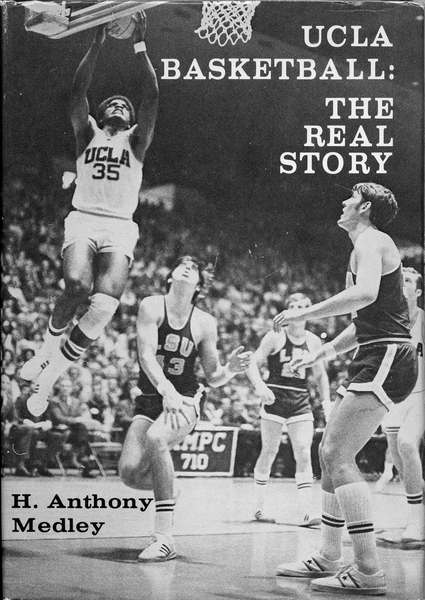|
Out of print for more than 30 years, now available for the first time as an eBook, this is the controversial story of John Wooden's first 25 years and first 8 NCAA Championships as UCLA Head Basketball Coach. This is the only book that gives a true picture of the character of John Wooden and the influence of his assistant, Jerry Norman, whose contributions Wooden ignored and tried to bury. Compiled with more than 40 hours of interviews with Coach Wooden, learn about the man behind the coach. The players tell their stories in their own words. Click the book to read the first chapter and for ordering information. Also available on Kindle. |
|
Crazy About Tiffany’s (3/10) by Tony Medley Runtime 87 minutes. OK for children. A few years ago Matthew Miele brought out a charming and informative documentary about Bergdorf, called, Scatter My Ashes at Bergdorf’s. It was sensational, not only capturing the style of Bergdorf but explaining how it got started and interviewing lots of the employees and customers. It was loaded with information and style. Now he follows it up with this disappointing snoozer about the jeweler, Tiffany’s. Some things we learn are about the classic color, Tiffany blue (called 1837 blue, the date Tiffany’s opened in New York), a sophisticated color, a robin’s egg blue with a green undertone. It is specifically made for Tiffany by Pantone and its formula is a secret. It was the color chosen by French Empress Eugenie, who was the Princess Di of her era, in the 1870s and Mr. Tiffany jumped on it and made it his own. The film is populated by interviews with impossibly privileged women, like Sam Taylor-Johnson, director of the appallingly bad 50 Shades of Grey, who gush about their Tiffany jewelry. One woman said that “life is measured by the moments that take your breath away,” implying that receiving Tiffany jewelry provided at least one of them for her. I found them all to be incredibly annoying. For some reason there is a lot of conversation about the movie Breakfast at Tiffany’s. What there isn’t, is much that explains Tiffany’s business, how it achieved the status it now has and why it is unique, other than the reputation it has. But how did it get that reputation above all other jewelers? You can just take so much of privileged people talking about their jewelry that is beyond the dreams of the vast majority of normal people. It also shows the many sports trophies made by Tiffany’s and shows the Grand Central Station clock, also made by Tiffany’s. One unidentified man said with marked condescension that permeates the film, “Oh, everybody should have a Peretti Sterling Cup!” He was referring to Tiffany designer Elsa Peretti, who started designing jewelry for Tiffany in the early 1970s. One problem I have with the film is that it really doesn’t tell much about the famous Tiffany designers like Peretti and Jean Schlumberger, although it does show how many of the people who work/shop there don’t know how to pronounce his name. What it ends up being is a display of highly offensive conspicuous consumption by some snooty ladies who wear their privilege at the end of their stuck up noses. Frankly, until the last ten minutes I had a hard time staying awake. |
|
|
